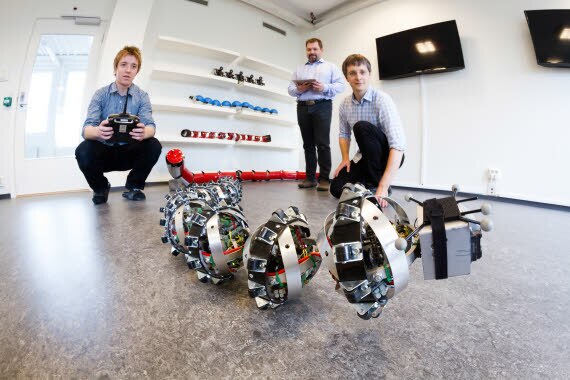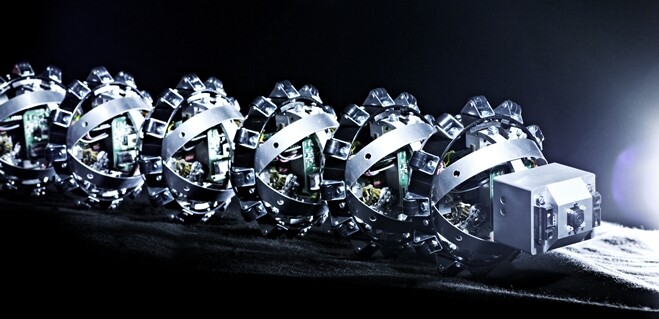Mars is essentially one big desert, and what do you tend to find in deserts? Snakes. There’s a reason for this, so the European Space Agency-funded SERPEX project is conducting a feasibility study on how robot snakes could one day be used to explore the Red Planet.
The NASA rovers from Sojourner on have revolutionized planetary exploration. Where the first landers were static platforms that would have missed a Martian army if it passed by beyond a hill, rovers can go where the science is. Unfortunately, as anyone who’s gone off-roading can tell you, unpaved terrain is not a very friendly place for wheeled vehicles and Mars is particularly unfriendly. This was dramatically shown when the NASA rover Spirit ended its career by getting stuck in soft sand 30 million miles from the nearest tow truck.
Snakes, on the other hand, could do very well in the variable terrain of Mars. Their ability to go over and through broken ground, negotiate sand, and squeeze through tight spaces explains why your average snake doesn’t have wheels.

With these advantages in mind, the SERPEX project is looking at how to use snake robots on planetary missions. The project is led by Norwegian research organization SINTEF, with the participation of the Centre for Interdisciplinary Research in Space, and the Norwegian Space Centre.
Serpentine robots have been under development on Earth for decades, but it’s still an open question as to whether they could operate on other planets and what missions they could perform.
The study is considering a number of scenarios with one of the most prominent being the concept of combining a rover with a snake robot into something a bit like a mechanical elephant. The idea is to take a rover similar to NASA’s Curiosity and equip it with a snake robot to give it a much greater reach and flexibility, as well as access to tight spaces and the ability to cope with terrain unsuitable for a wheeled or tracked vehicles. A snake robot also has potential as a means of collecting samples for return to Earth.
But why this combination? Why not just build a robot snake for Mars? It turns out that rovers have a lot of advantages.They are a tested technology and sturdy platforms. They can be filled with laboratories, move relatively fast over long distances, and, most important, can carry nuclear power sources.

According to SINTEF, this makes a rover an excellent base for a robot snake. One scenario would see the snake attached to the rover, where it acts as a sort of arm or tentacle. As needed, the robot can detach itself from the rover and slither off. However, it’s still connected to the rover by a cable, which supplies power and acts as a data link. If the cable is reinforced, the snake can also be used as an anchor while the rover winches itself out of a sand bunker or other hazard.
Where to site the snake robot is a problem because if it has to reattach itself, there needs to be some mechanism to hoist it back onto the rover. Whatever the configuration, more specific proposals will be presented to the European Space Agency in December.
One specific example has already been developed by SINTEF. Called Wheeko, this robot was created to study snake robot locomotion on flat surfaces. It has 10 identical joint modules with two degrees of motion each, and passive wheels to allow it to slither forward over flat surfaces, roll sideways, sidewind, and even rear up in a surprisingly lifelike fashion. It may be a very long way from what a practical Mars snake would be like, but it shows what the possibilities are.
The video below shows Wheeko being put through its paces.
Sources: Robotnor, SINTEF via IEEE Spectrum







